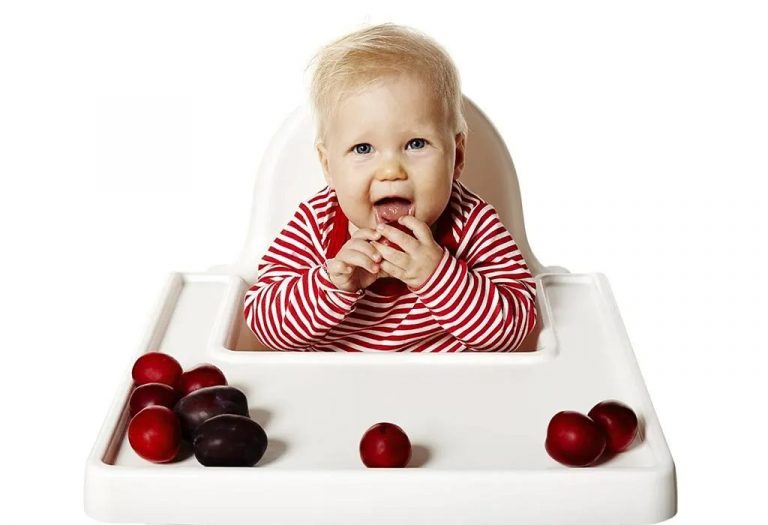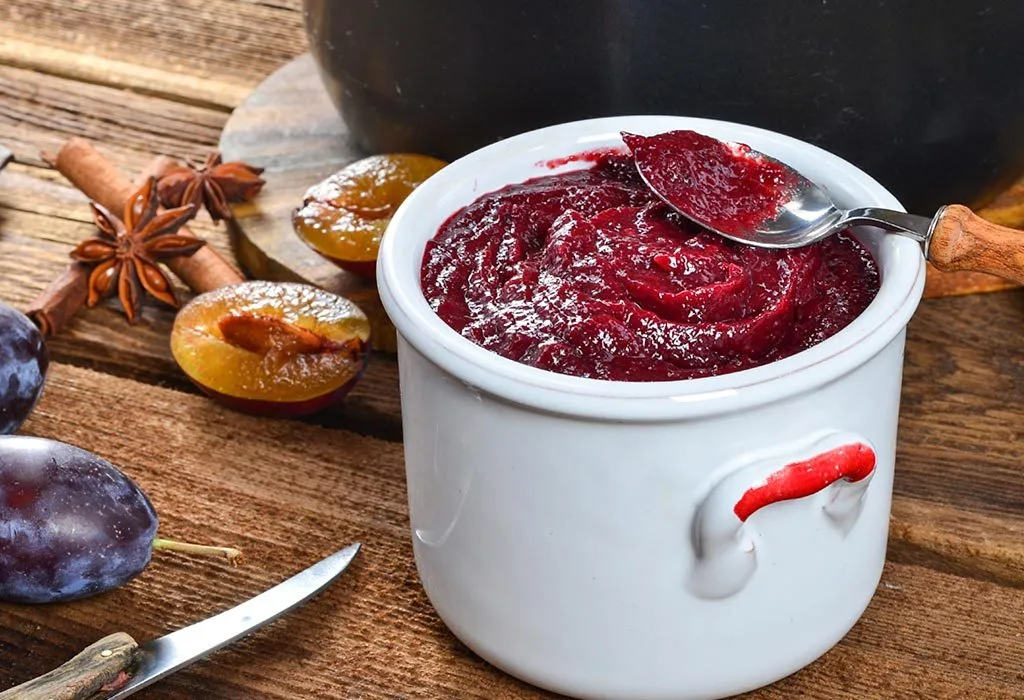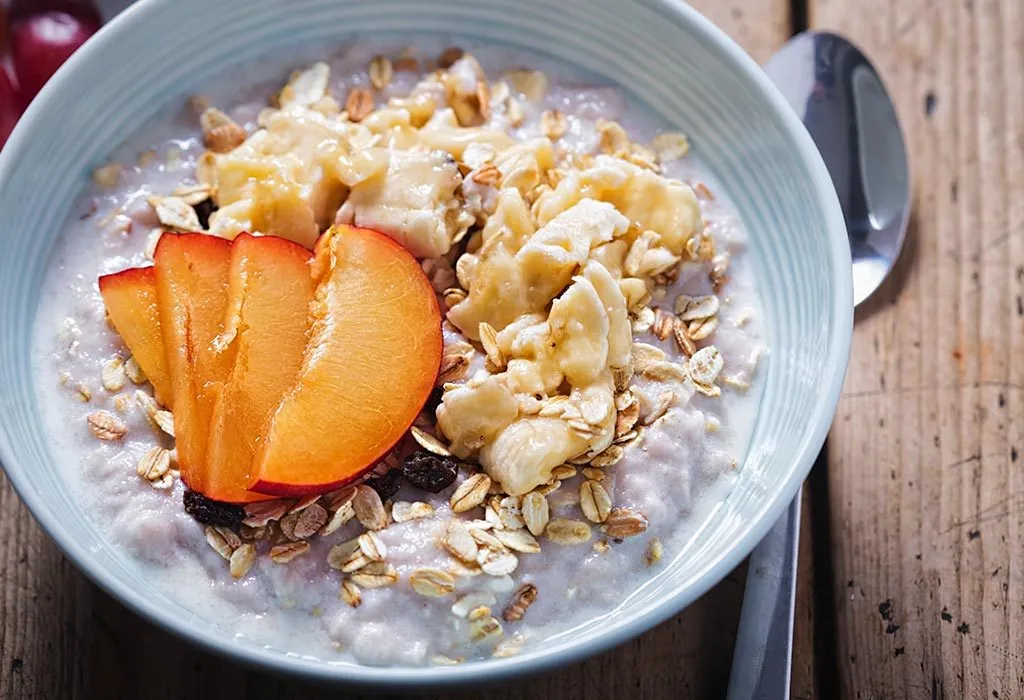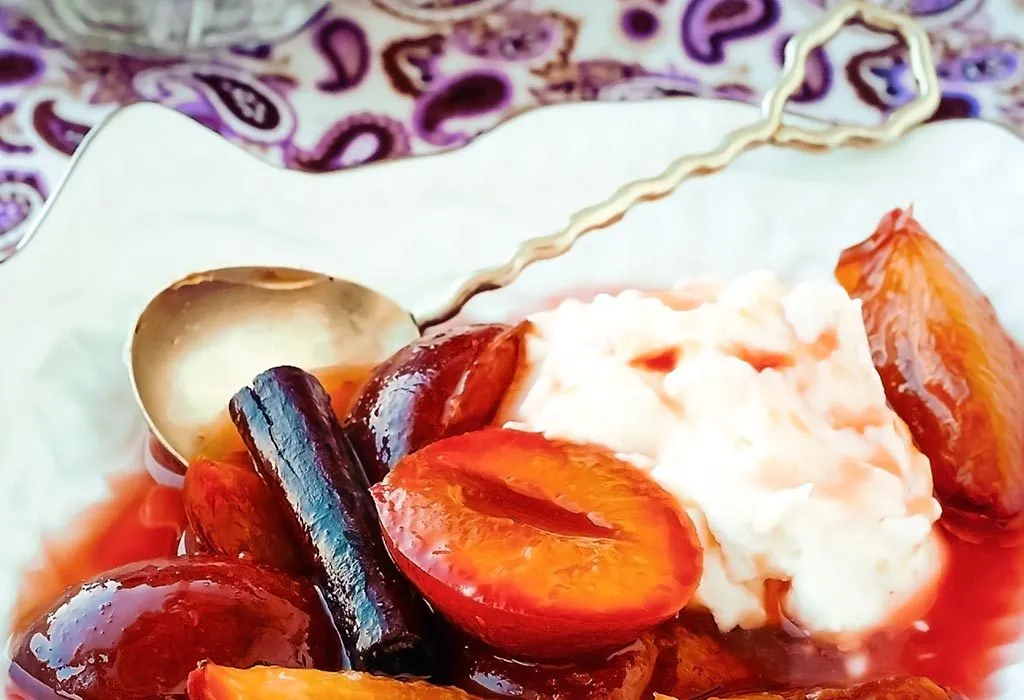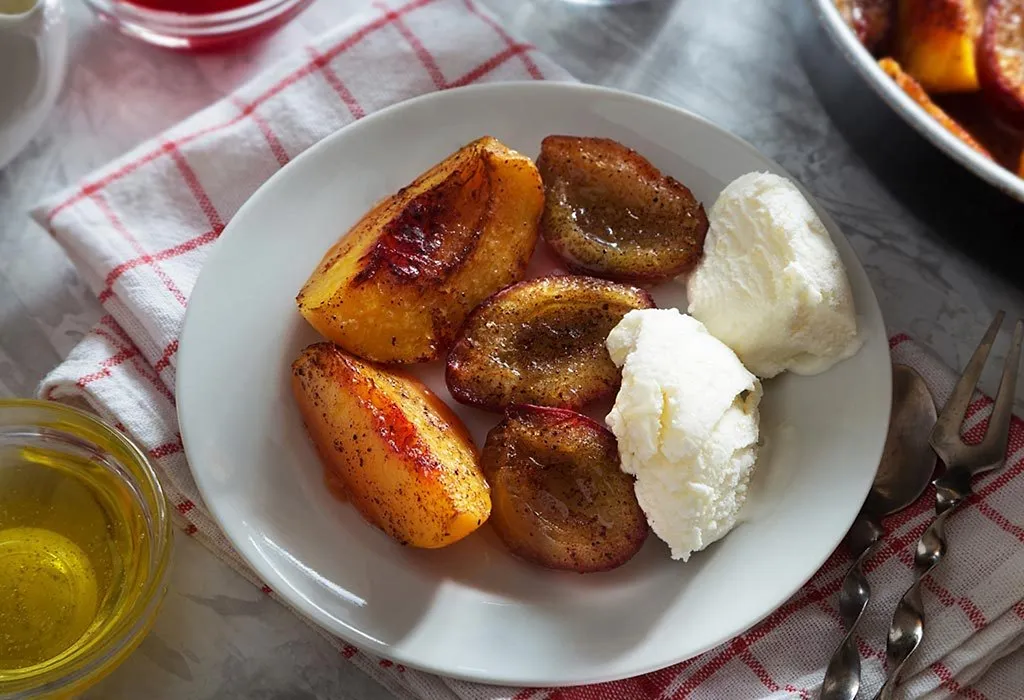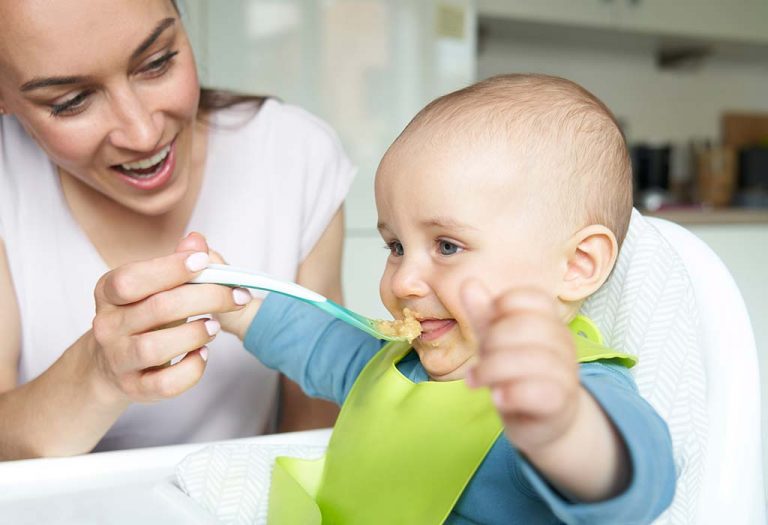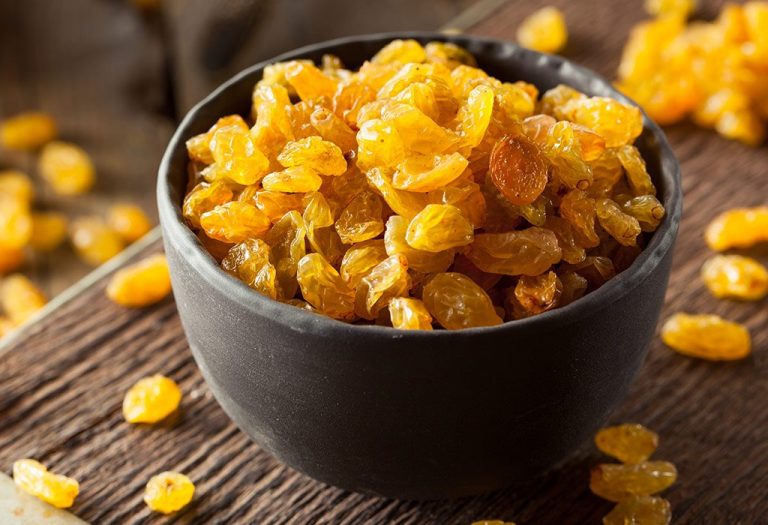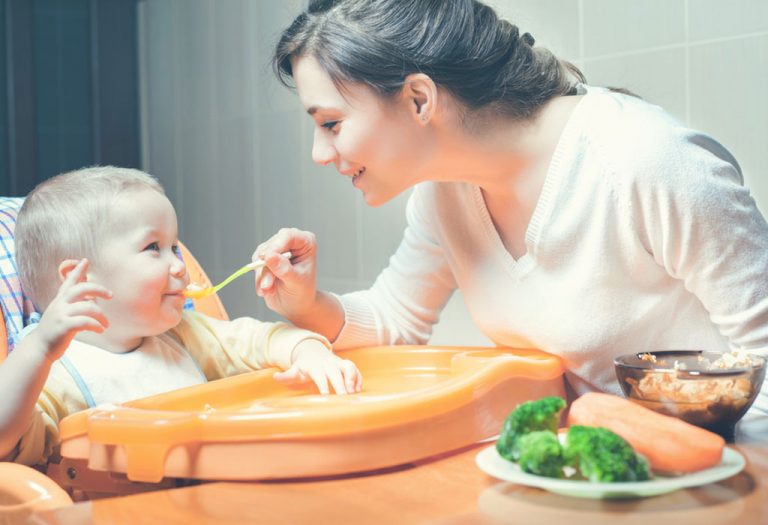Plums for Babies – Benefits and Recipes

After introducing solids to your baby, you will have a list of items that you’d like your baby to taste. When it comes to fruits, many people have a soft spot for plums as they are good for health. Plums are an excellent source of hydration and essential vitamins and minerals that are known for the combustion of flavours – tarty and tangy. But whether plums should be given to infants or not remains a common question among parents. Read this article to know if plums are safe for babies and when you can start feeding them to your little one.
Is Plum Safe for Babies?
Absolutely! Plums are one of those fruits that contain a number of nutrients that are essential in supporting rapid growth in babies. Furthermore, their special taste can stimulate the taste buds as well and introduce a new flavour to your child’s palate.
When Can You Introduce Plum to Your Baby’s Diet?
Plums can be introduced when your baby turns 10 months old or so. The best way to do so is in the form of puree, but it shouldn’t be the first thing that your baby tries. Always get your doctor’s recommendation before introducing anything new to your child.
But before you do that, take a look at the nutritional value and health benefits of plums. It’s always better to be informed before consulting an expert to have your questions ready for him/her to address during your visit.
Nutritional Facts of Plums
Below are the nutrients present in 100 grams of raw, plum as per USDA (1):
| Description | Quantity |
| Water | 87.2 g |
| Energy | 46 kcal |
| Fibre | 1.4 g |
| Total Sugar | 9.92 g |
| Potassium | 157 mg |
| Phosphorous | 16 mg |
| Calcium | 6 mg |
| Magnesium | 7 mg |
| Iron | 0.17 mg |
| Folate | 5 µg |
| Niacin | 0.417 mg |
| Vitamin A | 17 µg |
| Vitamin C | 9.5 mg |
Health Benefits of Plum for Babies
Here are the health benefits your little one is likely to gain upon eating plums:
- Plums are extremely nutritious and provide a ton of nutrients in the smallest serving, too. They are high in quinic acid, sorbitol, chlorogenic acids, copper, vitamin K1, boron, and potassium (1). It also has phenolic content, which is a natural antioxidant (2).
- The phytonutrients, including flavonoids, chlorogenic acid, and neo-chlorogenic, in plums are known for their high antioxidant activities that reduce inflammation (3).
- They are high in fibre and thus provide relief from digestive problems, constipation, and even colon cancer (4).
- Making baby porridge with plums is the easiest way to maintain all the existing nutrients and giving them to your child.
- Dried plums, also called as prunes, act as digestive stimulants and are widely recognised for strengthening bones as it boasts high amounts of vitamin K which help in balancing calcium content in the body (5).
When you are finally ready to feed plums to your munchkin, you may find yourself in a dilemma again when you come across different varieties of plums. To make it easier for you, we’ve given some tips you can use to choose and store the fruit.
Best Types of Plums for Baby Food
Different varieties of plums tend to taste a tad different. The plum that you prefer might not be liked by your child. Trial and error is the best way to go about it. However, it has been observed that plums of the Burbank or Victoria variety tend to be a hit with kids since they are juicy enough and are comparatively sweeter than the other varieties.
How to Choose and Store Plums for Infant Food?
When buying plums, make sure that they are soft but not too much. When pressing a plum, it should press down just a bit and not stay hard. Check the tip of the plum. If it is soft, then that’s a sign that it is fresh.
The colour should be pleasing and rich without any blemishes on the surface. At times, a light white coating might be present on the skin, which is actually a good sign that the plum has stayed untouched.
Hard plums should be avoided since they are not ripe, and they won’t have a great flavour. Plums tend to ripen quickly. If you do end up buying unripe plums, let them stay in the open for a while. Later, store ripe plums in the fridge. If you want to use them after a few days, it is best to freeze them completely. Removing the pits before freezing them is advisable.
Once you have plums that are just right, ripe, and ready for your baby to eat, you might wonder how you could feed them. Well, fret not. These recipes will make your life so much easier!
How to Give Plum to Baby?
You can serve plum to your baby in different ways.
- 6 Months Old and Above: You can offer a half, super ripe and pitted plum to your little one. Make sure to leave the skin on to grip the fruit easily.
- 9 Months Old and Above: You can offer long, thin slices of ripe plum, preferably with the skin on.
- 12 Months Old and Above: For biting practice, give your tiny tot thin slices or halved of pitted plums. You can also cut ripe plums into bite-sized pieces and pre-load them on a fork so your toddler can learn to eat with a fork.
- 18 Months Old and Above: You can offer your child a whole ripe plum to enjoy. Make sure to give a demonstration on how to eat and what to do when they feel the pit. Teach them that pits need not be chewed or swallowed.
Precautions While Giving Plums to Babies
Plums are safe for babies, but there are some crucial points to keep in mind:
- Remove the Pit: Always remove the stone before serving plums to your baby.
- Use Fresh Plums: Avoid frozen plums; fresh ones are better for your infant.
- Moderation is Key: Don’t overfeed plums, as their high fibre content can cause diarrhoea.
- Introduce Gradually: Start with a teaspoon of plum puree. Follow the three-day rule to monitor for allergies before increasing the amount.
- Avoid Canned Plums: Canned plums may contain preservatives and toxins that aren’t safe for babies.
By following these guidelines, you can safely include plums in your baby’s diet.
Easy and Tasty Plum Baby Food Recipes
Here are some simple plum recipes for your little one.
1. Thick and Tasty Plum Puree
This is a savoury plum puree recipe for the baby that will be relished by everyone.
What You Will Require:
- Fresh Plums
- Water at room temperature as well as ice-cold water
How to Make:
- Wash the plums properly. Take enough water in a pan and bring it to a boil. Then, add plums, and let them boil for another 10-15 minutes.
- Take the ice-cold water in another plan.
- Gently remove the plums from the boiling water using a slotted spoon and put them immediately in cold water. Take care to not add the boiling water to the cold one.
- Remove the plums and peel off the skin using your fingers or with a knife.
- Slice them in half and deseed them. Put all the plums in a blender and blend them together to form a puree. You may add some water to thin the puree down or some breastmilk to make it creamy.
2. Oats With Bananas and Plums
This spectacular delicacy can double up as a snack or breakfast.
What You Will Require:
- Fresh Plums
- Oatmeal
- Bananas
How to Make:
- In a container, take oats and bananas. Mash them together a bit.
- Add this mixture to a blender along with a few pieces of plums.
- Run the blender till you get a smooth consistency. If needed, add some more oats to thicken it further, and serve.
3. Yoghurt With Roasted Plums
This is a delicacy that tastes and looks wonderful!
What You Will Require:
- Fresh Plums
- Honey
- Plain butter
- Vanilla essence (optional)
- Yoghurt
How to Make:
- Preheat the oven to around 190 degrees.
- Take the plums and slice them in half, carefully removing the seed. Take an oven tray and place the plums on it in such a way that the cut portions face up.
- Add a few drops of vanilla essence on each piece of the plums. Follow it up by adding some butter and a small dollop of honey.
- Place the tray in the oven and let the plums get roasted for about half an hour. The plums should start getting tender by then.
- Remove the tray and let the plums cool down. Then, peel off their skin and mash them together in a bowl.
- To this puree, add some yoghurt and mix it well. Then serve.
4. Baked Plums Garnished With Cinnamon
This is the dessert that will leave everyone salivating.
What You Will Require:
- Fresh Plums
- Apple juice
- Cinnamon in powdered form
How to Make:
- Preheat the oven to 200 degrees.
- Take the plums, cut them in halves and carefully remove the seed. Place the plum halves in an oven tray.
- Add some apple juice over the plums to cover them properly. Follow it up by sprinkling some cinnamon powder.
- Cover the tray and place it in the oven. Bake this for about half an hour as the plums start getting soft.
- Take off the tray and let the plums cool down. Then, peel off the skin and mash all the plums together.
5. Plum Jam
Your tiny tot is going to be obsessed with this healthy and tangy plum jam!
What You Will Require:
- Fresh Plums – 1 cup
- Ground allspice -1 tbsp
- Cinnamon in powdered form – 1 tsp
- Water
How to Make:
- Halve and pit the plums. In a pan, add water, sugar, and the plums.
- Boil until the plums soften.
- Remove the mixture from the heat and puree it. Once blended, return the puree to the pan, adding allspice and cinnamon.
- Cook on low heat until the mixture thickens like jam. Let it cool before storing.
6. Banana Plum Smoothie
This lush banana plum smoothie is super refreshing, tasty, and fulfilling for babies and picky toddlers.
What You Will Require:
- Frozen plums – 1 cup
- Frozen ripe banana – 1 cup
- Milk – 1 cup
How to Make:
- In a blender, add frozen bananas and plums. Blend once or twice.
- Next, add milk to the mixture and blend it again nicely.
- Voila! Your baby’s banana plum smoothie is ready!
FAQs
1. What about raw plum for baby?
A raw plum for baby is not recommended as it is super suitable for babies’ taste palate and may cause stomach issues.
2. Do plums pose a choking hazard for babies?
Yes, plums pose a shocking threat to babies as they can be either slippery or firm, making them a choking hazard. When serving plums or any dishes made with plums, make sure there are no heavy chunks that could cause a choking scene and make sure to stay with them when they have any pitted or non-pitted fruit for safety.
3. How do I store plum food for my baby?
Store the baby plum foods like jams or smoothies in an airtight container in the refrigerator and label it with the preparation date. For plum baby food specifically, you can refrigerate them for up to three days and freeze them for up to three months. Use the preparations within a reasonable time.
4. Can I feed my baby plum products that contain sugar or preservatives?
American Academy of Pediatrics advises against the use of added sugars in the form of furctose, sucrose, dextrose, glucose, honey, brown sugar, lactose, raw sugar, corn syrup, malt syrup, maltose, and molasses, as they may cause adverse health effects on a baby’s health and development (6). As far as preservatives and additives go, they, too, are extremely health-damaging for babies (7).
The nutritional benefits of plums make them a perfect fruit to give to your baby. However, always get your doctor’s confirmation before introducing them to your little one. It is ideal to wait until your child is a year old. This will allow him to enjoy the fruit in all its glory, and he will look forward to other wonderful recipes, too.
References/Resources:
1. Plums, raw; USDA; https://fdc.nal.usda.gov/fdc-app.html#/food-details/169949/nutrients
2. Igwe. E, Charlton. K; A Systematic Review on the Health Effects of Plums ( Prunus domestica and Prunus salicina );
Phytotherapy Research; ResearchGate; https://www.researchgate.net/publication/298899398_A_Systematic_Review_on_the_Health_Effects_of_Plums_Prunus_domestica_and_Prunus_salicina; March 2016
3. Keservani RK, Sharma AK, Kesharwani RK. Medicinal Effect of Nutraceutical Fruits for the Cognition and Brain Health. Scientifica (Cairo).; Pubmed Central; https://www.ncbi.nlm.nih.gov/pmc/articles/PMC4757744/; 2016
4. Stacewicz-Sapuntzakis M. Dried plums and their products: composition and health effects–an updated review. Crit Rev Food Sci Nutr.; PubMed; https://pubmed.ncbi.nlm.nih.gov/24090144/; 2013
5. Wallace. T. C; Dried Plums, Prunes and Bone Health: A Comprehensive Review; Nutrients; https://www.ncbi.nlm.nih.gov/pmc/articles/PMC5409740/pdf/nutrients-09-00401.pdf; April 2017
6. How to Reduce Added Sugar in Your Child’s Diet: AAP Tips; American Academy of Pediatrics; https://www.healthychildren.org/English/healthy-living/nutrition/Pages/How-to-Reduce-Added-Sugar-in-Your-Childs-Diet.aspx
7. Common food additives and chemicals harmful to children; Harvard Health Publishing; https://www.health.harvard.edu/blog/common-food-additives-and-chemicals-harmful-to-children-2018072414326
Also Read:
Pear for Infants
Beetroot for Babies
Introducing Grapes to Babies
Are Bananas Good for Babies?
Was This Article Helpful?
Parenting is a huge responsibility, for you as a caregiver, but also for us as a parenting content platform. We understand that and take our responsibility of creating credible content seriously. FirstCry Parenting articles are written and published only after extensive research using factually sound references to deliver quality content that is accurate, validated by experts, and completely reliable. To understand how we go about creating content that is credible, read our editorial policy here.






